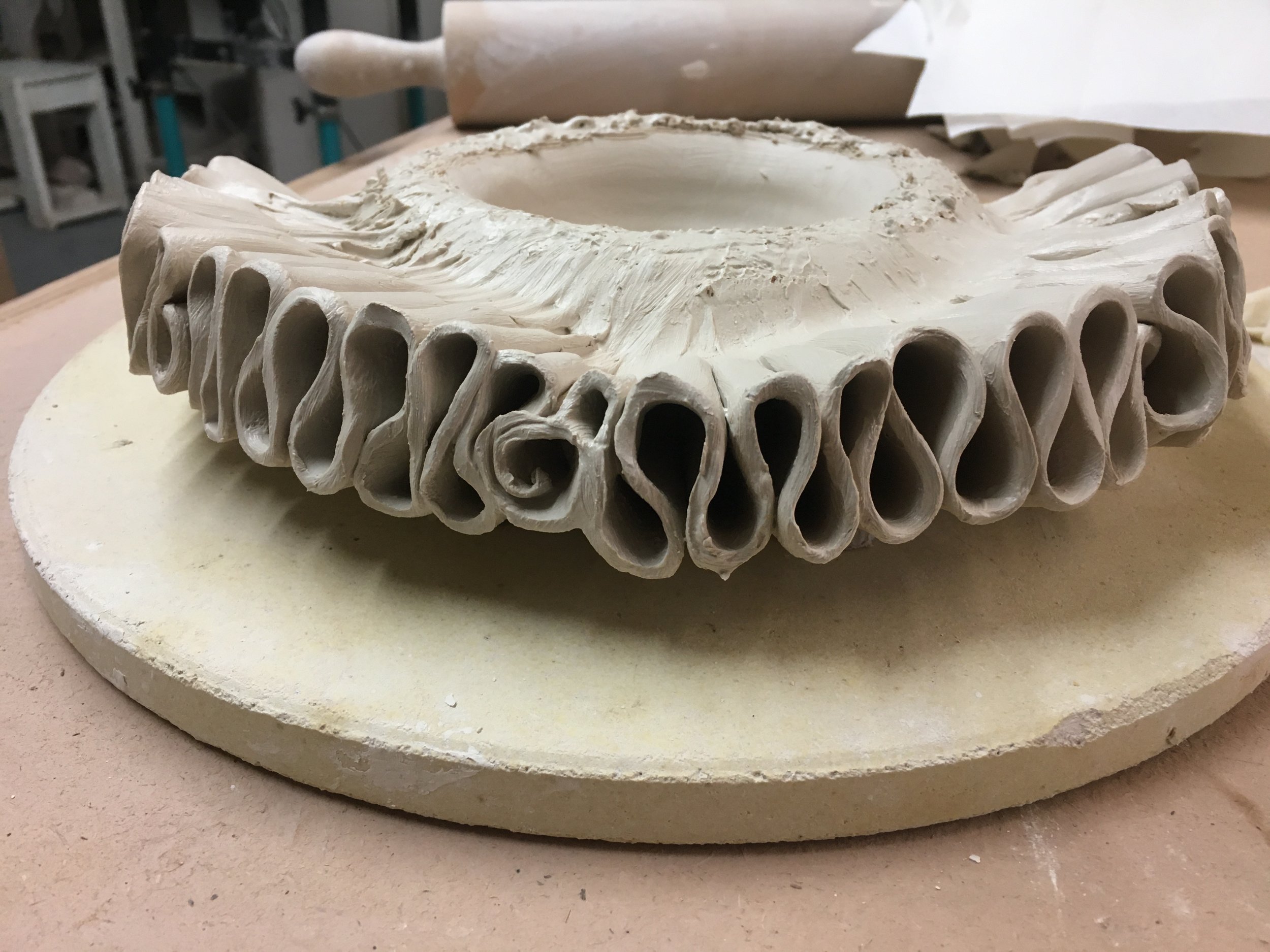Porcelain "Cloud-bands"
As a ceramic sculpting material, porcelain is extremely versatile. It is flexible, malleable, and fragile in its unfired state, but once it is fired it becomes very strong. It can be cut into thick, heavy slabs or it can be flattened so thin it becomes translucent. And it can be formed into just about any shape imaginable. This time I’m going to be focusing on its unique ability to form thin, wavy “ribbons”. For various technical reasons of the clay composition, porcelain is very well suited to form thin, wavy structures. But it only works if the clay has just the right amount of moisture so it will bend but not crack. These delicate structures can be combined with other sculpted shapes, which is what I plan to do…
The below image from the Voynich Manuscript will be my inspiration for this sculpture- the wavy lines that I’ve highlighted in blue are the part I want to make with wavy ribbons of porcelain. The rest of the sculpture will be made using other techniques.
Different styles of wavy lines are found in other parts of the Voynich Manuscript too—below are just a couple of examples:
While researchers of the manuscript are not in agreement about what this imagery might mean, the wavy lines are often referred to as “cloud bands” because this was a common way of delineating clouds or cosmic boundaries in medieval art.
When I look at these cloud-bands from the viewpoint of deciding how I would sculpt them in three dimensions, I thought I would try to use thin strips of porcelain formed into wavy shapes. When viewed from the side, the wavy porcelain looks like this:
So I started to experiment with how to incorporate this into a sculpture. This is the progress so far, halfway through the first cloud layer. The recessed area in the center is where the figure will stand.









